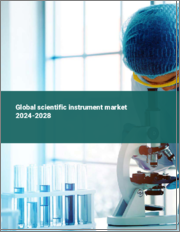
|
시장보고서
상품코드
1661125
세계의 과학 기기 시장 보고서 : 최종 용도별, 유형별, 지역별(2025-2033년)Scientific Instrument Market Report by End-Use (Industrial, Government Institutes, Academics), Type (Scientific Clinical Analyzers, Scientific Analytical Instruments), and Region 2025-2033 |
||||||
과학 기기 시장 세계 시장 규모는 2024년 462억 달러에 달했습니다. 향후 IMARC Group은 2033년까지 687억 8,000만 달러에 달할 것으로 예상하며, 2025-2033년간 4.48%의 연평균 성장률(CAGR)을 보일 것으로 예측했습니다. 과학 연구 및 개발 부문의 확대, 정부 및 대학 연구실, 기타 다양한 연구 기관에 최고의 장비를 제공하기 위한 정부 및 제조업체의 협력 관계 증가는 시장 성장을 가속하는 주요 요인 중 하나입니다.
과학 기기란 과학적 목적을 위해 설계, 조립, 개량된 실험기구를 말합니다. 이러한 기기에는 전류계, 기압계, 색차계, 검류계, 비중계, 광도계, 축음기 등이 포함되며, 재료나 원소의 입증되지 않은 특성이나 수량을 분석, 측정, 검증하는 데 사용됩니다. 과학 기기는 신제품 개발 및 기존 제품의 혁신 및 개조에서 중요한 구성 요소입니다. 오늘날에는 연구 기관에서도 연구 방법의 최적 효율을 달성하기 위해 이러한 장비를 사용하고 있습니다.
세계 주요 수요 촉진은 R&D 부문의 성장입니다. 또한, 정부 기관, 대학 연구실 및 기타 다양한 연구 기관에 최적의 장비를 제공하기 위해 정부와 제조업체의 협력 관계가 증가하고 있는 것도 전체 시장 성장에 기여할 것으로 예상됩니다. 또한, 과학 기기와 컴퓨터의 통합은 기기의 기능을 확장 및 강화하여 매개변수 조정 및 조건을 제공하고, 데이터 샘플링, 수집, 해상도 및 분석을 간소화합니다. 이에 따라 과학 기기 수요는 전 세계적으로 확대될 것으로 예상됩니다.
본 보고서에서 다룬 주요 질문
- 2024년 세계 과학 기기 시장 규모는?
- 2025-2033년 과학 기기 시장 세계 시장 성장률은?
- 세계 과학 기기 시장을 이끄는 주요 요인은?
- 코로나19가 세계 과학 기기 시장에 미치는 영향은?
- 세계 과학 기기 시장의 최종 용도별 분류는?
- 세계 과학기기 시장 유형별 분류는?
- 세계 과학 기기 시장의 주요 지역은?
- 세계 과학 기기 시장의 주요 기업은?
목차
제1장 서문
제2장 조사 범위와 조사 방법
- 조사 목적
- 이해관계자
- 데이터 소스
- 1차 정보
- 2차 정보
- 시장 추정
- 보텀업 접근
- 톱다운 접근
- 조사 방법
제3장 주요 요약
제4장 서론
- 개요
- 주요 업계 동향
제5장 세계의 과학 기기 시장
- 시장 개요
- 시장 실적
- COVID-19의 영향
- 가격 분석
- 주요 가격 지표
- 가격 구조
- 마진 분석
- 시장 분석 : 최종 용도별
- 시장 분석 : 유형별
- 시장 분석 : 지역별
- 시장 예측
- SWOT 분석
- 개요
- 강점
- 약점
- 기회
- 위협
- 밸류체인 분석
- 개요
- 연구개발
- 원재료 조달
- 제조
- 마케팅
- 유통
- 최종 용도
- Porter의 Five Forces 분석
- 개요
- 바이어의 교섭력
- 공급 기업의 교섭력
- 경쟁 정도
- 신규 진출업체의 위협
- 대체품의 위협
제6장 시장 분석 : 최종 용도별
- 산업
- 시장 동향
- 시장 예측
- 정부기관
- 시장 동향
- 시장 예측
- 학술기관
- 시장 동향
- 시장 예측
제7장 시장 분석 : 유형별
- 과학적 임상 분석 장비
- 시장 동향
- 시장 예측
- 과학 분석 장비
- 시장 동향
- 시장 예측
제8장 시장 분석 : 지역별
- 아시아태평양
- 북미
- 유럽
- 중동 및 아프리카
- 라틴아메리카
제9장 과학 기기 제조 공정
- 제품 개요
- 원재료 요건
- 제조 공정
- 주요 성공 요인과 리스크 요인
제10장 경쟁 구도
- 시장 구조
- 주요 기업
- 주요 기업 개요
- Agilent Technologies Inc.
- Bruker Corporation
- Danaher Corporation
- Horiba Ltd.
- Thermo Fisher Scientific Inc.
- Waters Corporation
- F. Hoffmann-La Roche AG
- PerkinElmer Inc.
- Merck KGaA
The global scientific instrument market size reached USD 46.2 Billion in 2024. Looking forward, IMARC Group expects the market to reach USD 68.78 Billion by 2033, exhibiting a growth rate (CAGR) of 4.48% during 2025-2033. The expanding scientific R&D sector and rising collaboration between the governments and manufacturers to provide the best instruments in government and university laboratories, and various other research institutions are some of the key factors driving the market growth.
Scientific instruments refer to laboratory equipment which are designed, constructed and refined for scientific purposes. These instruments include ammeter, barometer, chromometer, galvanometer, hydrometer, photometer, phonograph, etc. which are used for analysing, measuring and verifying the unproven properties and quantities of a material or an element. Scientific instruments form an important component of new product development and innovating and remodelling the existing products. In modern times, research institutes use these instruments to achieve optimum efficiency in their research processes as well.
The major demand driver of the global scientific instrument market is the growth of the research and development sector. Additionally, the rising collaboration between the governments and manufacturers to provide the best instruments in government and university laboratories, and various other research institutions is anticipated to contribute to the market growth across the globe. Further, the integration of scientific instruments with computers extends and enhances instrumental functions, offers parameter adjustments & conditions and streamlines data sampling, collection, resolution & analysis. This is expected to expand the demand for scientific instruments worldwide.
Key Market Segmentation:
Breakup by End-Use:
- Industrial
- Government Institutes
- Academics
Based on the end-use sectors, the report has segregated the market as industrial, government institutes and academics. Currently, industrial users dominate the market, accounting for the largest share.
Breakup by Type:
- Scientific Clinical Analyzers
- Scientific Analytical Instruments
On the basis of type, the market has been segmented into scientific clinical analyzers and scientific analytical instruments. Amongst these, scientific clinical analyzers are the most popular type, holding the majority of the market share.
Breakup by Region:
- North America
- Europe
- Asia Pacific
- Middle East & Africa
- Latin America
The report has segmented the global scientific instruments market on the basis of region into North America, Europe, Asia Pacific, Latin America, and Middle East & Africa.
Competitive Landscape:
The competitive landscape of the market has also been examined with some of the key players being Agilent Technologies Inc., Bruker Corporation, Danaher Corporation, Horiba Ltd., Thermo Fisher Scientific Inc., Waters Corporation, F. Hoffmann-La Roche AG, PerkinElmer Inc. and Merck KGaA.
This report provides a deep insight into the global scientific instrument market covering all its essential aspects. This ranges from macro overview of the market to micro details of the industry performance, recent trends, key market drivers and challenges, SWOT analysis, Porter's five forces analysis, value chain analysis, etc. This report is a must-read for entrepreneurs, investors, researchers, consultants, business strategists, and all those who have any kind of stake or are planning to foray into the scientific instrument market in any manner.
Key Questions Answered in This Report
- 1.What was the size of the global scientific instrument market in 2024?
- 2.What is the expected growth rate of the global scientific instrument market during 2025-2033?
- 3.What are the key factors driving the global scientific instrument market?
- 4.What has been the impact of COVID-19 on the global scientific instrument market?
- 5.What is the breakup of the global scientific instrument market based on the end-use?
- 6.What is the breakup of the global scientific instrument market based on the type?
- 7.What are the key regions in the global scientific instrument market?
- 8.Who are the key players/companies in the global scientific instrument market?
Table of Contents
1 Preface
2 Scope and Methodology
- 2.1 Objectives of the Study
- 2.2 Stakeholders
- 2.3 Data Sources
- 2.3.1 Primary Sources
- 2.3.2 Secondary Sources
- 2.4 Market Estimation
- 2.4.1 Bottom-Up Approach
- 2.4.2 Top-Down Approach
- 2.5 Forecasting Methodology
3 Executive Summary
4 Introduction
- 4.1 Overview
- 4.2 Key Industry Trends
5 Global Scientific Instrument Market
- 5.1 Market Overview
- 5.2 Market Performance
- 5.3 Impact of COVID-19
- 5.4 Price Analysis
- 5.4.1 Key Price Indicators
- 5.4.2 Price Structure
- 5.4.3 Margin Analysis
- 5.5 Market Breakup by End-Use
- 5.6 Market Breakup by Type
- 5.7 Market Breakup by Region
- 5.8 Market Forecast
- 5.9 SWOT Analysis
- 5.9.1 Overview
- 5.9.2 Strengths
- 5.9.3 Weaknesses
- 5.9.4 Opportunities
- 5.9.5 Threats
- 5.10 Value Chain Analysis
- 5.10.1 Overview
- 5.10.2 Research and Development
- 5.10.3 Raw Material Procurement
- 5.10.4 Manufacturing
- 5.10.5 Marketing
- 5.10.6 Distribution
- 5.10.7 End-Use
- 5.11 Porters Five Forces Analysis
- 5.11.1 Overview
- 5.11.2 Bargaining Power of Buyers
- 5.11.3 Bargaining Power of Suppliers
- 5.11.4 Degree of Competition
- 5.11.5 Threat of New Entrants
- 5.11.6 Threat of Substitutes
6 Market Breakup by End-Use
- 6.1 Industrial
- 6.1.1 Market Trends
- 6.1.2 Market Forecast
- 6.2 Government Institutes
- 6.2.1 Market Trends
- 6.2.2 Market Forecast
- 6.3 Academics
- 6.3.1 Market Trends
- 6.3.2 Market Forecast
7 Market Breakup by Type
- 7.1 Scientific Clinical Analyzers
- 7.1.1 Market Trends
- 7.1.2 Market Forecast
- 7.2 Scientific Analytical Instruments
- 7.2.1 Market Trends
- 7.2.2 Market Forecast
8 Market Breakup by Region
- 8.1 North America
- 8.1.1 Market Trends
- 8.1.2 Market Forecast
- 8.2 Europe
- 8.2.1 Market Trends
- 8.2.2 Market Forecast
- 8.3 Asia Pacific
- 8.3.1 Market Trends
- 8.3.2 Market Forecast
- 8.4 Middle East & Africa
- 8.4.1 Market Trends
- 8.4.2 Market Forecast
- 8.5 Latin America
- 8.5.1 Market Trends
- 8.5.2 Market Forecast
9 Scientific Instrument Manufacturing Process
- 9.1 Product Overview
- 9.2 Raw Material Requirements
- 9.3 Manufacturing Process
- 9.4 Key Success and Risk Factors
10 Competitive Landscape
- 10.1 Market Structure
- 10.2 Key Players
- 10.3 Profiles of Key Players
- 10.3.1 Agilent Technologies Inc.
- 10.3.2 Bruker Corporation
- 10.3.3 Danaher Corporation
- 10.3.4 Horiba Ltd.
- 10.3.5 Thermo Fisher Scientific Inc.
- 10.3.6 Waters Corporation
- 10.3.7 F. Hoffmann-La Roche AG
- 10.3.8 PerkinElmer Inc.
- 10.3.9 Merck KGaA













